Since 2010 the phytoplankton community of Potter Cove, Antarctica, alternates between years of high and low biomass. Before 2010, the phytoplankton biomass was constantly low. Despite phytoplankton’s fundamental role in the ecosystem, the trophic dynamics between the planktonic organisms remain largely unexplored. The present study aims to fill this gap by investigating the trophic structure and dynamics of the plankton community in Potter Cove under bloom and non-bloom scenarios using a network-based approach. The assembled food web includes all possible pathways for energy between the species. The comparison of the weighted food web metrics for the bloom and non-bloom scenario showed differences between the two states concerning species composition and interaction strength. In the bloom year more trophic species of higher trophic level with a greater interaction strength were present indicating a greater availability of food for higher trophic levels. This research shows a more detailed picture of the functioning of the plankton community and builds towards a better understanding of the energy flows within the Antarctic plankton community, enhancing our ability to predict the impacts of environmental change, including climate change, on polar marine ecosystems.
promotor/supervisor feedback
nothing yet




